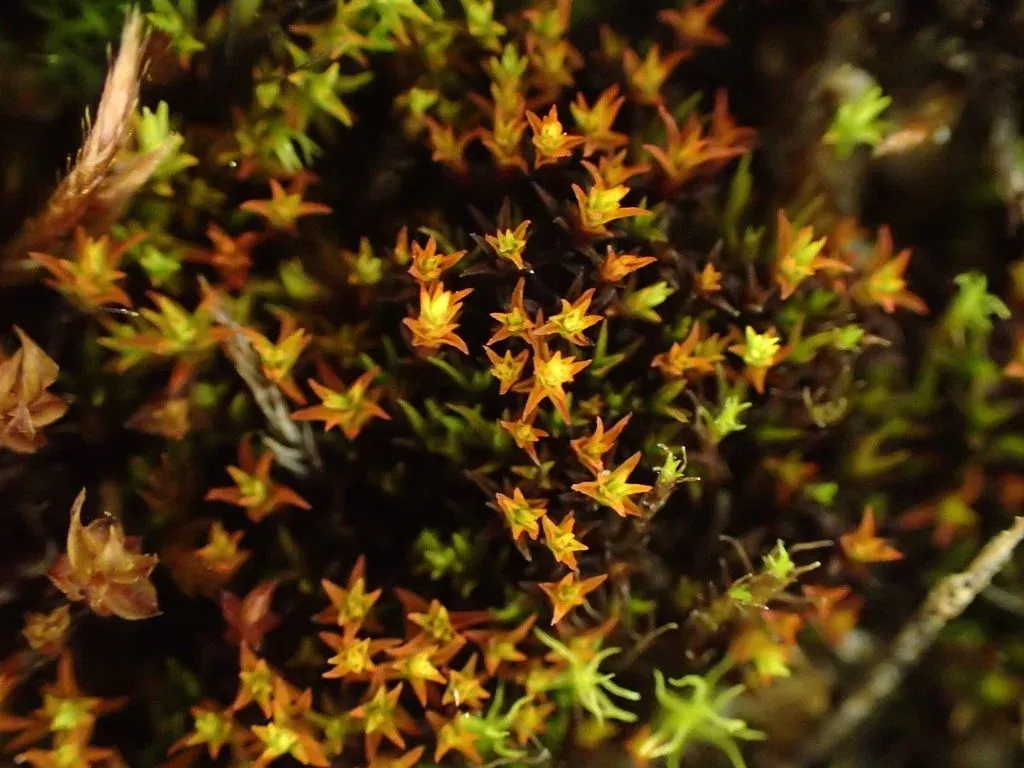
2020-10-24-15-41-07-800×600.jpg from: https://www.britishbryologicalsociety.org.uk/learning/species-finder/bryoerythrophyllum-ferruginascens/
Introduction
In the vast and captivating world of bryophytes, one moss species stands out for its unique characteristics and ecological significance: Bryoerythrophyllum ferruginascens (Stirt.) Giacom., commonly known as Bryoerythrophyllum. This unassuming yet remarkable member of the Pottiaceae family has captured the interest of moss enthusiasts and researchers alike, offering a fascinating glimpse into the intricate tapestry of nature’s smallest wonders.
Background
Before delving into the intricacies of Bryoerythrophyllum ferruginascens, it’s essential to understand the broader context of bryophytes. These ancient and resilient plants, comprising mosses, liverworts, and hornworts, have been around for over 400 million years, predating even the earliest vascular plants. Despite their diminutive stature, bryophytes play a crucial role in various ecosystems, acting as pioneers in colonizing barren landscapes and contributing to soil formation and moisture retention.
Main Content
Morphology and Identification
Bryoerythrophyllum ferruginascens is a acrocarpous moss, meaning its sporophytes (spore-bearing structures) grow vertically from the tips of the gametophyte (leafy) shoots. Its leaves are lanceolate (lance-shaped) and contorted

240px-Bryoerythrophyllum_ferruginascens_(a%2C_144847-474701)_7187.JPG from: https://commons.wikimedia.org/wiki/Bryoerythrophyllum_ferruginascens
when dry, giving the plant a distinctive appearance. The

medium.jpg from: https://enciclovida.mx/especies/147234
ferruginascens part of its scientific name refers to the rusty-red color of the plant, particularly noticeable in the older portions.
Global Distribution and Habitat
This moss species has a widespread distribution, occurring on various continents, including North America

21859_182_4.jpg from: https://artfakta.se/naturvard/taxon/bryoerythrophyllum-ferruginascens-182
, Europe, Asia, and

1911dd22a3a59657f28854a2bf6b620d466d910d.jpg from: https://atlas.roslin.pl/plant/9463
Australia. It thrives in a range of habitats, from rocky outcrops and cliff faces to disturbed areas and even urban environments. Its ability to colonize diverse substrates, such as soil, rock, and bark, contributes to its success in different ecosystems.

303518.jpg from: https://inpn.mnhn.fr/espece/cd_nom/434178
Ecological Roles and Adaptations
Despite its small size, Bryoerythrophyllum ferruginascens plays a vital role in its environment. As a pioneer species, it helps stabilize and enrich soils, creating favorable conditions for other plants to establish themselves. Additionally, its dense mats provide microhabitats for various invertebrates, contributing to biodiversity.
One of the remarkable adaptations of this moss is its ability to withstand desiccation (drying out) and rapidly rehydrate when moisture becomes available. This trait, known as poikilohydry, allows Bryoerythrophyllum ferruginascens to thrive in environments with intermittent water availability, making it a resilient and versatile species.
Case Studies/Examples
In a study conducted in the Pacific Northwest region of North America, researchers found Bryoerythrophyllum ferruginascens to be a valuable indicator species for assessing the health of forest ecosystems. Its presence or absence can provide insights into factors such as soil quality, moisture levels, and disturbance regimes.

il_fullxfull.3218280323_k1ga.jpg from: https://www.thebryophytanursery.com/listing/1028601908/rare-red-and-green-moss

fe2ad7.jpg from: https://davesgarden.com/community/forums/fp.php?pid=7781172
Another interesting example comes from urban environments, where Bryoerythrophyllum ferruginascens has been observed growing on concrete surfaces and even old brick walls. This ability to colonize human-made structures highlights the moss’s adaptability and resilience, making it a fascinating subject for urban ecologists.
Technical Table

Bryoerythrophyllum-ferruginascens-2-scaled.jpg from: https://biofokus.no/biofokus-med-ny-kunnskap-om-moser-i-hoyfjellet/
| Characteristic | Description |
|---|---|
| Phylum | Bryophyta |
| Class | Bryopsida |
| Order | Pottiaceae |
| Genus | Bryoerythrophyllum |
Species
 il_fullxfull.3378470624_mo6a.jpg from: https://moss-wholesale.com/products/terrarium-moss-bryoerythrophyllum-ferruginascens-with-phytosanitary-certification-and-passport-grown-by-moss-supplier |
ferruginascens |
| Growth Form | Acrocarpous |
| Leaf Shape | Lanceolate, contorted when dry |
| Color | Rusty-red, especially in older portions |
| Habitat | Rocky outcrops, cliff faces, disturbed areas, urban environments |
| Distribution | Widespread across multiple continents |
Conclusion
Bryoerythrophyllum ferruginascens is a remarkable moss species that exemplifies the resilience and adaptability of bryophytes. From its unique morphology and coloration to its ecological roles and widespread distribution, this unassuming plant offers a wealth of insights into the intricate workings of nature. As we continue to explore and appreciate the diversity of bryophytes, Bryoerythrophyllum ferruginascens serves as a reminder of the incredible complexity and beauty that can be found in even the smallest of organisms. Perhaps the next time you encounter a rusty-red patch on a rock or wall, you’ll pause and appreciate the fascinating world of this unassuming yet extraordinary moss.